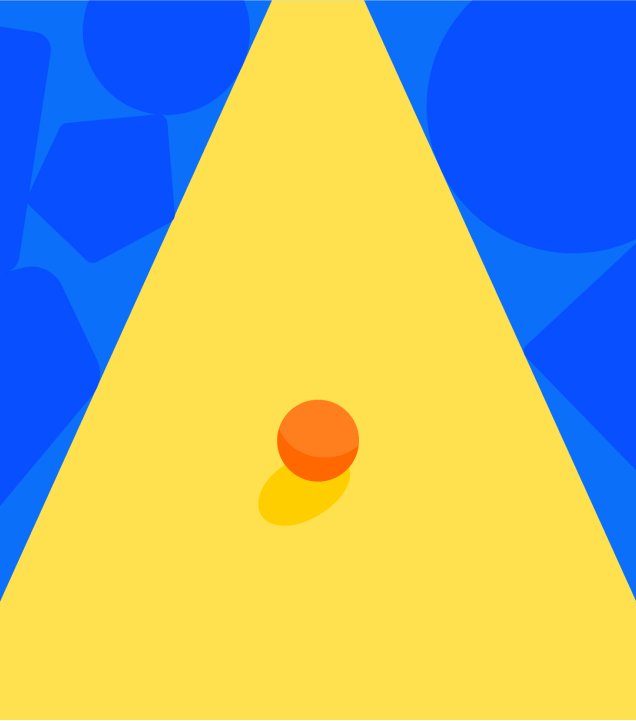What is mindfulness?
Researched and written by our mindfulness and meditation experts | Learn more
Sep 26, 2023
You may have heard that mindfulness — the ability to be fully present in the moment — can have numerous benefits, everything from decreased stress and sadness to increased levels focus and happiness, according to general mindfulness research. But what exactly is mindfulness? And, how can you recognize it and reap its many benefits? Mindfulness meditation practice is one way to truly experience the current moment and integrate that awareness into your everyday life. Here’s everything you need to know to get started.
Try this mini-meditation from Headspace to cultivate mindfulness

Mini-Meditation: Letting Go of Stress
1 min
Defining mindfulness
First, it’s helpful to become familiar with the meaning of mindfulness, as well as how it relates to meditation. Mindfulness is the quality of being present and fully engaged with whatever we’re doing at the moment — free from distraction or judgment, and aware of our thoughts and feelings without getting caught up in them. We train in this moment-to-moment awareness through meditation, allowing us to build the skill of mindfulness so that we can then apply it to everyday life. In teaching the mind to be present, we are teaching ourselves to be live more mindfully — in the present, taking a breath, not beholden to reactive thoughts and feelings — which is particularly helpful when faced with challenging circumstances or difficult situations.
Wondering how many times a day you're in a mindful state? There’s actually a 15-item questionnaire researchers use to measure mindfulness called the Mindful Attention Awareness Score (MAAS), that you can take to see where you stand — the higher the score, the greater your ability to be mindful. Scored lower than you’d like? Don’t sweat it! It’s simply a sign that you may benefit from some mindfulness meditation practice.
The difference between mindfulness and meditation
Here’s the thing that many people find confusing about mindfulness: it’s not a temporary state of mind that is present during meditation and then vanishes for the rest of the day. Rather, mindfulness is a way of living in which — when we remember — we are able to step back and be in the present moment in any situation.
Mindfulness doesn’t eliminate stress or other difficulties; instead, by becoming aware of unpleasant thoughts and emotions that arise because of challenging situations, we have more choice in how to handle them in the moment — and a better chance of reacting calmly and empathetically when faced with stress or challenges. Of course, practicing mindfulness does not mean we never get angry — rather it allows us to be more thoughtful in how we want to respond, whether that's calmly and empathetically or perhaps, occasionally with measured anger.
Meditation is the training ground for learning mindfulness. At first, we meditate to become familiar with the here and now for a limited period of time. Over time, however, regularly practicing mindfulness helps us develop the ability to be present throughout the day, every day.
How mindfulness meditation works
Mindfulness meditation doesn’t only change our mindset and perspective, it actually can change the shape of our brains. Generalized neuroimaging meditation studies found that 8 weeks of mindfulness meditation also changes our brains, rewiring them towards more positive thoughts and emotions.
For starters, meditation allows us to move from high-frequency brain waves to a lower frequency, which activates (and, potentially even more importantly, deactivates) certain areas of the brain. For example, it can decrease neurological connections to the medial prefrontal cortex, or the “me center,” diminishing traits such as fear, stress, and anxiety. In turn, meditation can also build new pathways to the parts of the brain responsible for traits like focus and decision-making.
And that’s not all: mindfulness meditation can actually change the shape of the brain as well, a process known as neuroplasticity. Research shows that gray matter — the area of the brain responsible for emotional regulation, planning, and problem-solving — as well as the cortical thickness — responsible for learning and memory — both increase with regular meditation practice. Alternatively, the amygdala, which regulates how we feel stress, fear, and anxiety, decreases in size.
The benefits of mindfulness
The hype around mindfulness meditation is real. People who incorporate it into their lives often report heightened levels of happiness, patience, acceptance, and compassion, as well as lower levels of stress, frustration, and sadness. There’s plenty of research, too: Separate studies conducted by Northeastern University found that 3 weeks of Headspace increased compassion by 23% and reduced aggression by 57%. What’s more, another study with students found that 10 days of Headspace increased positivity and well-being. And yet another — an internal study that was published in top mindfulness journal PLOS ONE — found that 10 days of Headspace reduced stress by 14%.

Practicing mindfulness meditation
Practicing mindfulness meditation can be a great way to manage stress and boost compassion, focus, empathy, patience, energy, and ultimately, happiness. If you’re just beginning a practice, a guided mindfulness meditation — led by a teacher in person or via the Headspace app — might be a good place to start. Having a trusted, experienced teacher guide you through the basic steps can be key to getting the most out of the experience.
Most guided mindfulness meditations follow a similar format: the teacher explains how the mind behaves during meditation, leads you through a particular meditation technique, and suggests how to integrate this technique into your everyday life.
Though there are countless mindfulness techniques — each rooted in a different tradition and with a unique focus — most have one thing in common: they’re aimed at cultivating two essential components, calm and clarity, with the intention to remain focused and hone a natural quality of awareness.
8 meditation techniques that cultivate mindfulness
Here’s a breakdown of eight of the more popular mindfulness techniques — all of which are used in the Headspace app. Some will sound intriguing, while others may not be your cup of tea. See which ones work best for you.
1. Focused Attention:
Likely the most common form of meditation, this technique uses the breath to anchor the mind and maintain awareness. Focus your attention on the breath — specifically the rise and fall of the chest — and return to the breath whenever you get distracted or notice your mind starting to wander.
2. Body Scan:
This technique, which uses meditation to connect with the body, involves scanning your body from head to toe and being aware of any discomfort, sensations, or aches that exist (which could be indicators of stress and anxiety).
3. Noting:
This is a mindfulness technique in which you “note” a particular thought or feeling when you become distracted during meditation. The practice of noting helps to create space and learn more about our habits, tendencies, and conditioning.
4. Loving Kindness:
Instead of focusing on the breath, this technique involves focusing on the image of different people: people we know, people we don’t; people we like, people we don’t. We direct well-wishes and goodwill first to ourselves, and then, as a ripple effect, to others, which helps us let go of unhappy feelings we may be experiencing.
5. Skillful Compassion:
Similar to the loving kindness meditation technique, this one involves focusing on a person you know or love and paying attention to the sensations arising from the heart. It’s aptly named because it’s thought to be helpful in opening our hearts and minds for the benefit of other people, which in turn fosters a feeling of happiness in our own mind.
6. Visualization:
This technique uses visualization, to focus on a person or something more abstract, to hold attention. The idea here is that the familiar image will help create and maintain a relaxed focus.
7. Resting Awareness:
Rather than focusing on the breath or a visualization, this technique involves letting the mind rest; thoughts may enter, but instead of distracting you and pulling you away from the present moment, they simply leave.
8. Reflection:
For this technique, ask yourself a question, for example, “What are you most grateful for?” (Note that asking yourself a question using the second person — you — will discourage the intellectual mind from trying to answer it rationally.) Be aware of the feelings, not the thoughts, that arise when you focus on the question. Here is a video with more instruction on how to use the reflection meditation technique.
Practicing mindfulness post-meditation
Whichever technique you choose, know that experiencing moments of mindfulness during meditation is a great first step. After meditation, while our minds will likely experience distractions throughout the day, the more our mindfulness practice is honed and developed, the more we are able to catch ourselves being distracted and the more we are able to bring our focus back to the present moment. After all, that’s the whole point of practicing mindfulness meditation — to make us more mindful and less distracted throughout the day.
So how do you remember to be mindful when you’re not meditating? At the end of your meditation, try to recognize how your mind feels and then make an intention to carry that feeling into the rest of your day. Some people find it helpful to form a clear idea of what they are going to do next — maybe take a shower or get a cup of coffee — and perform their next task with the same level of awareness they experienced during meditation. It doesn’t matter what you do after meditation, as long as you look for opportunities throughout your day in which to recognize the space and mindfulness you experienced during your practice.
Mindfulness for beginners
When you’re ready, press play on Headspace’s 10-day beginner’s course on mindfulness basics — available with your membership or free trial. Jump into your new practice with the essentials. From there, once you gain more experience and confidence, you can explore the whole library of content, featuring hundreds of guided mindfulness meditations on a wide array of topics from stress and compassion, to sleep and focus.
Be kind to your mind. Start with a free trial of Headspace!
READ NEXT: What is mindful eating?


Be kind to your mind
- Access the full library of 500+ meditations on everything from stress, to resilience, to compassion
- Put your mind to bed with sleep sounds, music, and wind-down exercises
- Make mindfulness a part of your daily routine with tension-releasing workouts, relaxing yoga, Focus music playlists, and more
Annual - billed at $69.99 USD/yr
14 days free
$5.83 USD/month
Monthly
7 days free
$12.99 USD/month

Learn more about meditation

Stay in the loop
Be the first to get updates on our latest content, special offers, and new features.
By signing up, you’re agreeing to receive marketing emails from Headspace. You can unsubscribe at any time. For more details, check out our Privacy Policy.
- © 2025 Headspace Inc.
- Terms & conditions
- Privacy policy
- Consumer Health Data
- Your privacy choices
- CA Privacy Notice






